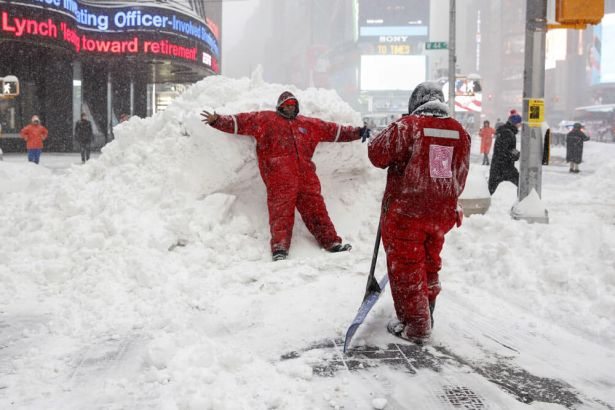
Snow storm Jonas has become a worldwide celebrity. Photos of the entire East Coast of the U.S. covered in 30 inch snow went viral on the internet and the overall costs and effects of the storm are being calculated over and over again. The New York Stock Exchange felt the touch of the blizzard, but not as much as one might expect and with relatively expected outcomes.
Due to nature of the storm, some sectors performed naturally better and other naturally worse. Grocery stores have known a surge in their stock prices due to people loading of on essentials before the storm got worse. Images of empty shelves were fairly common in the last period and the entire industry sector known a small bump.

Image Source: telegraph.co.uk
On the other end of the spectrum, industries that rely heavily on people moving were the main losers. The transport industry was once of the biggest losers, with lots of flights getting canceled and less and less people wanting to leave their homes, while hotels also known a great decrease in visitors. The hospitality sector was the worst performing one in this period, with good reason, too.
As far as individual stocks are concerned, we can highlight the performance of Briggs & Stratton Corp, which rose more than 10% in one afternoon. The main product of the company which sold very well in this period is … a snow blower. There were other retailers which also had decent gains due to snow removal equipment selling, such as Home Depot (+2,85%) and Lowe’s Company INC (+3,51%). Some other winners were snow mobile producers, such as Polaris Industries (+6, 08%).
To sum up, the effect snow storm Jonas had upon the NYSE were anything but unexpected. Although the blizzard was stronger than what we’ve seen in recent winters, its effects were not catastrophic. Of course, with January just ending, there is still time for another major blizzard this winter, so we might have to hold on tight and do another analysis when spring will come around.
